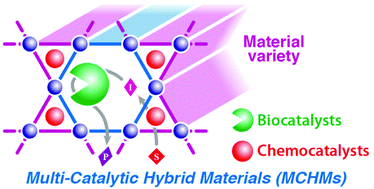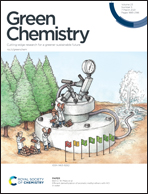Optimisation of catalysts coupling in multi-catalytic hybrid materials: perspectives for the next revolution in catalysis†
Abstract
The search for the optimal coupling of several types of catalysts has inspired the development of multi-catalytic hybrid materials (MCHMs) featuring chemical and biological catalysts co-immobilised on the same support. This complex interdisciplinary strategy, located at the crossroads of chemistry, biology, and materials science, calls for a wide range of skills and offers access to MCHMs with diverse catalytic properties and applications. In particular, numerous organic and inorganic supports, both rigid or flexible, have been used to develop remarkable hybrid catalysts that exhibit synergetic effects and achieve yields and enantiomeric excesses unattainable through the separate use of catalyst constituents even in one-pot/one step processes. As the spearhead of hybrid catalysis, MCHMs concentrate the very essence of this field, requiring seamless communication and collaboration between chemists, biologists, materials scientists, and modelling specialists. Future developments in this area are expected to revolutionise catalysis and make it an inter- or even transdisciplinary research area.

- This article is part of the themed collection: Green Chemistry Reviews


 Please wait while we load your content...
Please wait while we load your content...